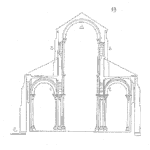When designing equipment and processes, engineers leave a safety margin that ensures equipment remains functional when a fault or defect is affecting it partially or wholly. Minor defects affecting production assets should not cause immediate breakdowns. A fault-tolerant system remains operational for predetermined intervals before undertaking corrective measures. Faults affecting the operation of different systems emanate from more than a single source. [Read more…]
Article tagged Fault/Success Tree Analysis (FTA/STA)
A technique to explore the many potential or actual causes of product or system failure. FTA is a top-down analysis method, where one starts with a symptom or fault and then lists the many possible causes in a structured manner. It provides a structured way to organize information about the occurrence of the top event. FTA may be useful to create a system reliability model to estimate system reliability performance or to organize brainstorming potential paths of events that lead to the occurrence of the top event.
How Can CMMS Supplement Fault Tree Analysis
Fault tree analysis (FTA) is used to establish a potential chain or path of equipment failures using Boolean logic to generate a graphical relationship of events leading to part or system failure. It is a deductive approach that is useful for different systems or facilities at the product design or operational stages. FTA fosters reliability of systems by: [Read more…]
Basic Description of a Fault Tree Analysis

A fault tree analysis (FTA) is a logical, graphical diagram that starts with an unwanted, undesirable, or anomalous state of a system.
The diagram then lays out the many possible faults and combination of faults within the subsystems, components, assemblies, software, and parts comprising the system which may lead to the top level unwanted fault condition. [Read more…]
A Brief Introduction to Fault Tree Analysis

Fault Tree Analysis (FTA) is a technique to explore the many potential or actual causes of product or system failure.
Best applied when there are many possible ways something may fail. For example, when my car doesn’t start, it could be a dead battery, faulty started, loose wire, no fuel, and on and on. [Read more…]
Fault Tree Analysis 8 Step Process

Fault Tree Analysis (FTA) provides a means to logically and graphically display the paths to failure for a system or component. One way to manage a complex system is to start with a reliability block diagram (RBD). Then create a fault tree for each block in the RBD.
Whether a single block or a top level fault for a system the basic process to create a fault tree follows a basic pattern. [Read more…]
Benefits of Fault Tree Analysis

Is a logical, graphical diagram that organizes the possible element failures and combination of failures that lead to the top level fault being studied.
The converse, the success tree analysis, starts with the successful operation of a system, for example, and examines in a logical, graphical manner all the elements and combinations that have to work successfully.
With every product, there are numerous ways it can fail. Some more likely and possible than others. The FTA permits a team to think through and organize the sequences or patterns of faults that have to occur to cause a specific top level fault. The top level fault may be a specific type of failure, say the car will not start. Or it may be focused on a serious safety related failure, such as the starter motor overheats starting a fire. [Read more…]
Intro to Fault Tree Analysis

The NASA Fault Tree Handbook with Aerospace Applications
This is a break from the usual format of this site. I’m highly recommending that as your review materials and prepare for the CRE exam or prepare to conduct an FTA, you read this NASA document as an intro to fault tree analysis.
For a review, I suggest the first chapter or two. If working in the aerospace industry, you should print and use a copy.
The following is an extended excerpt from the first section of the document. [Read more…]
 Ask a question or send along a comment.
Please login to view and use the contact form.
Ask a question or send along a comment.
Please login to view and use the contact form.